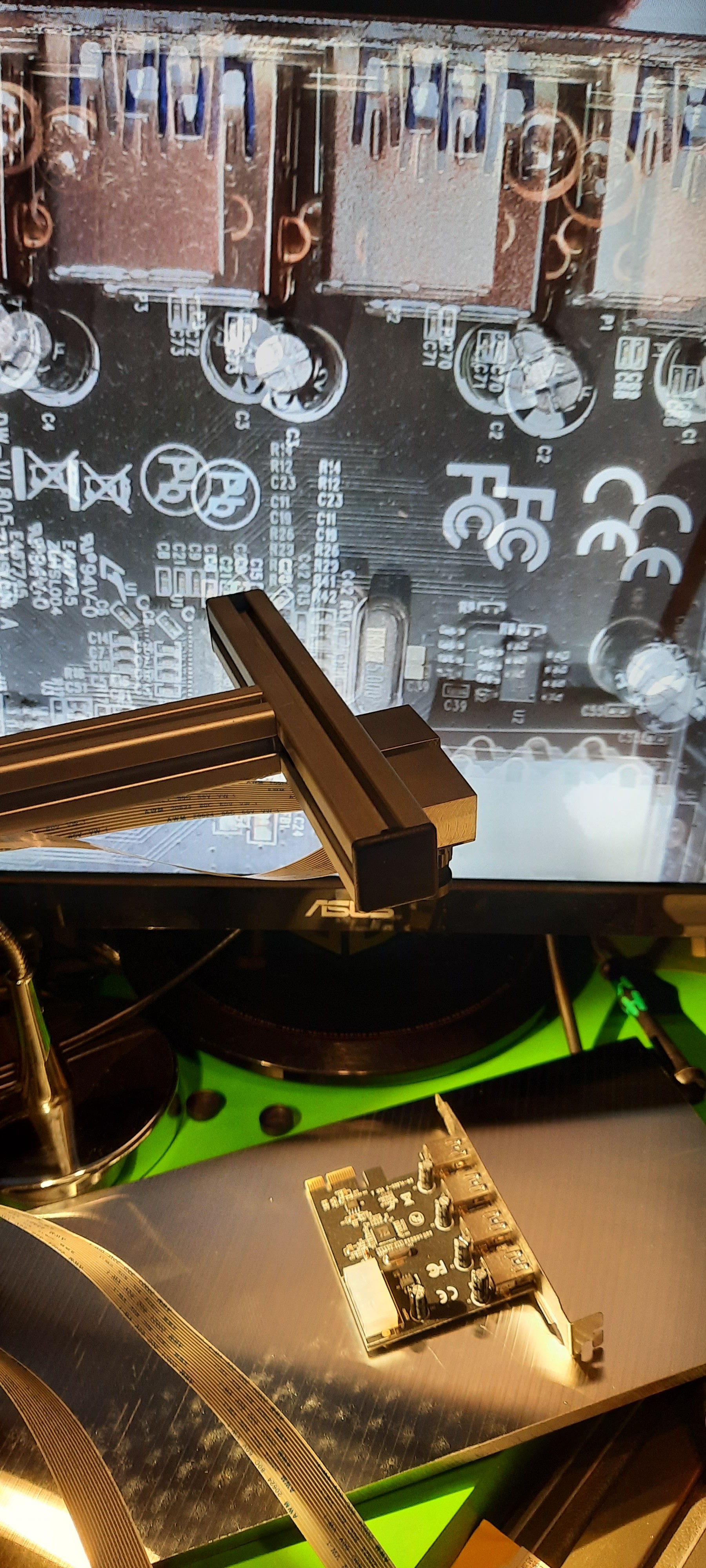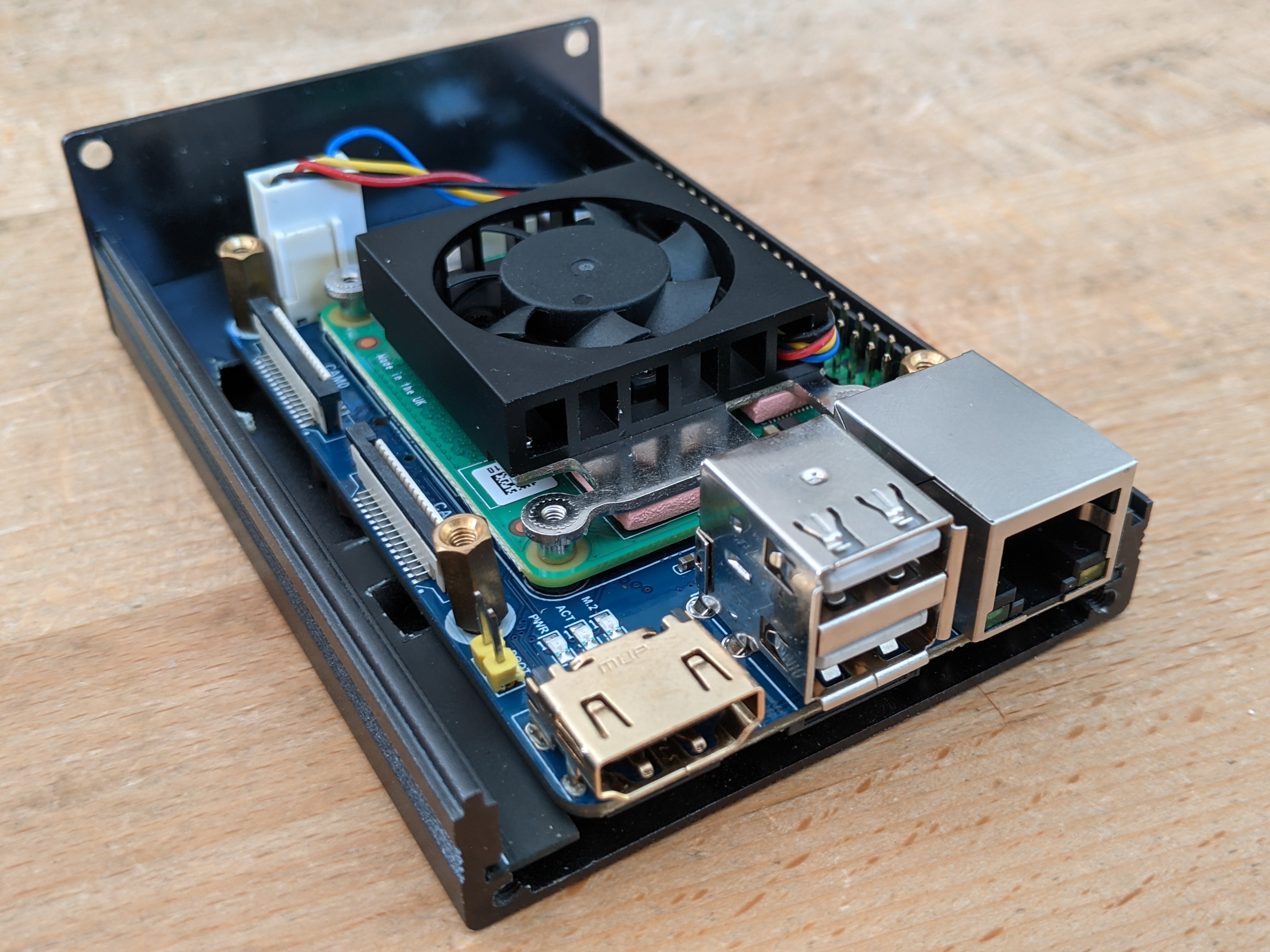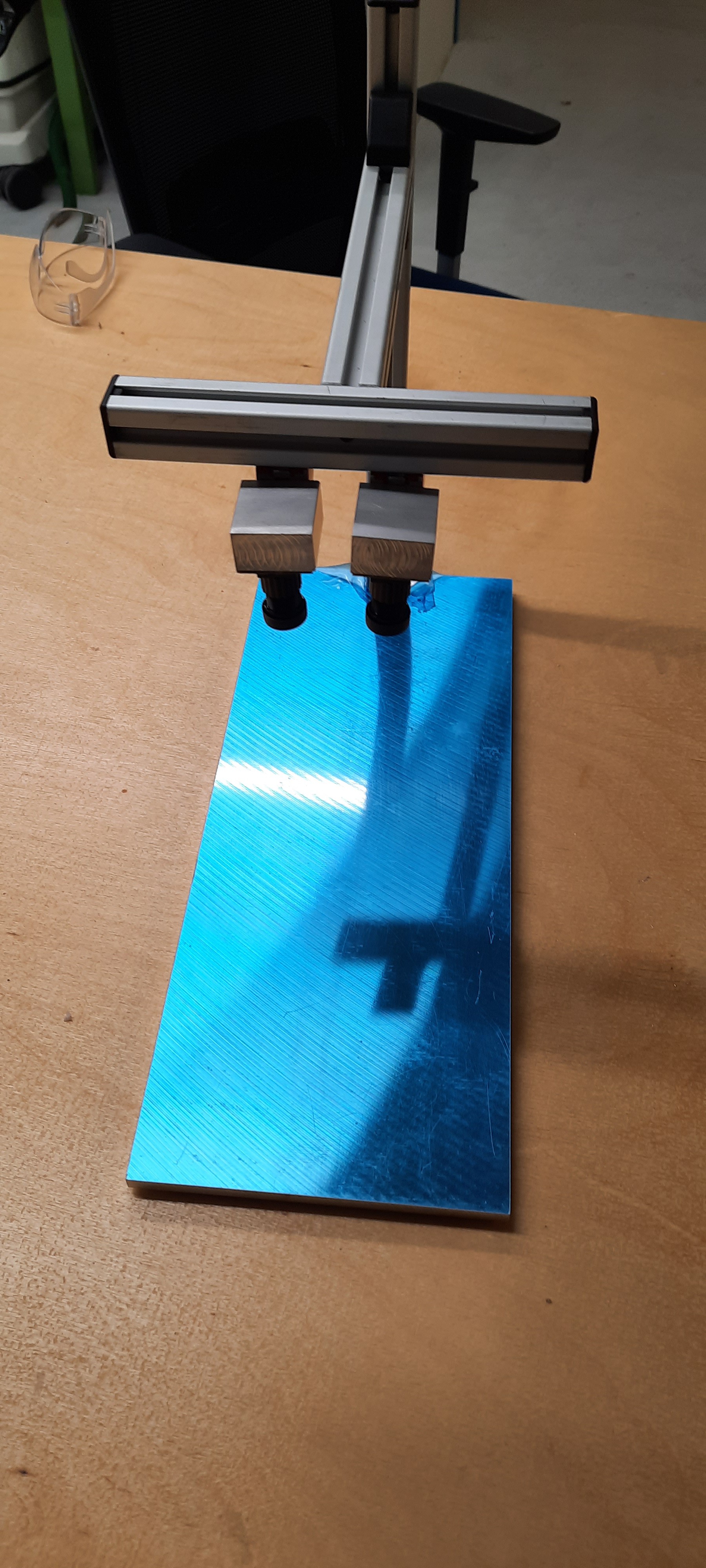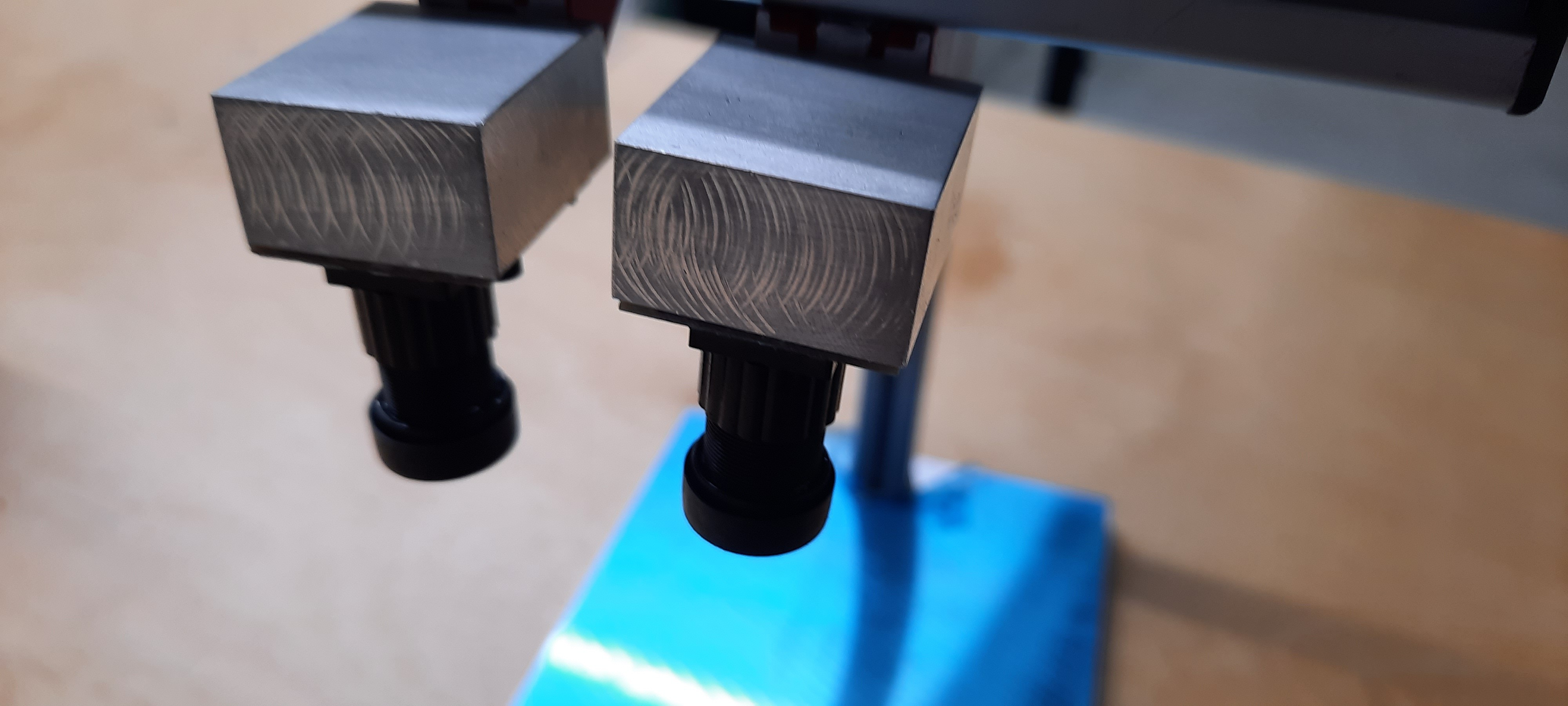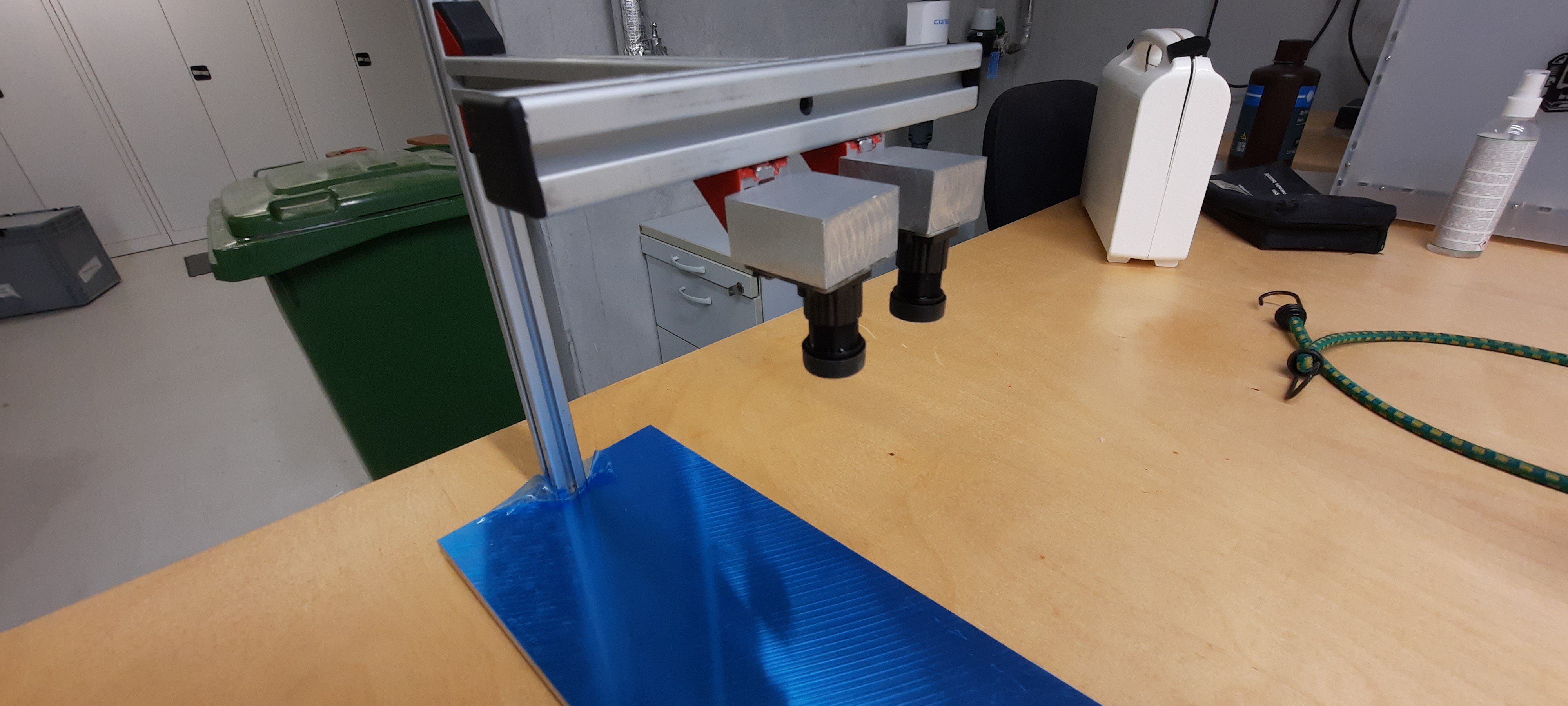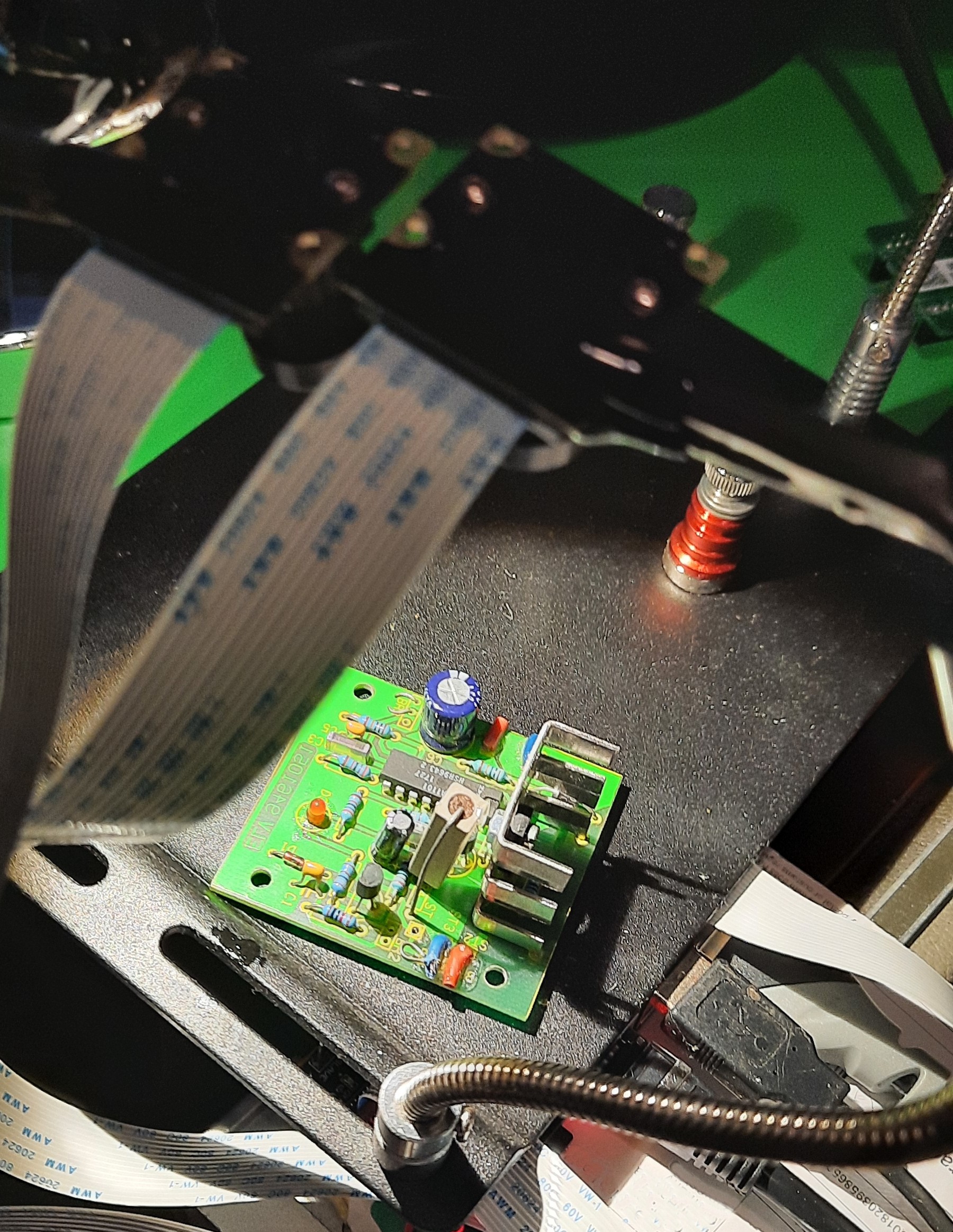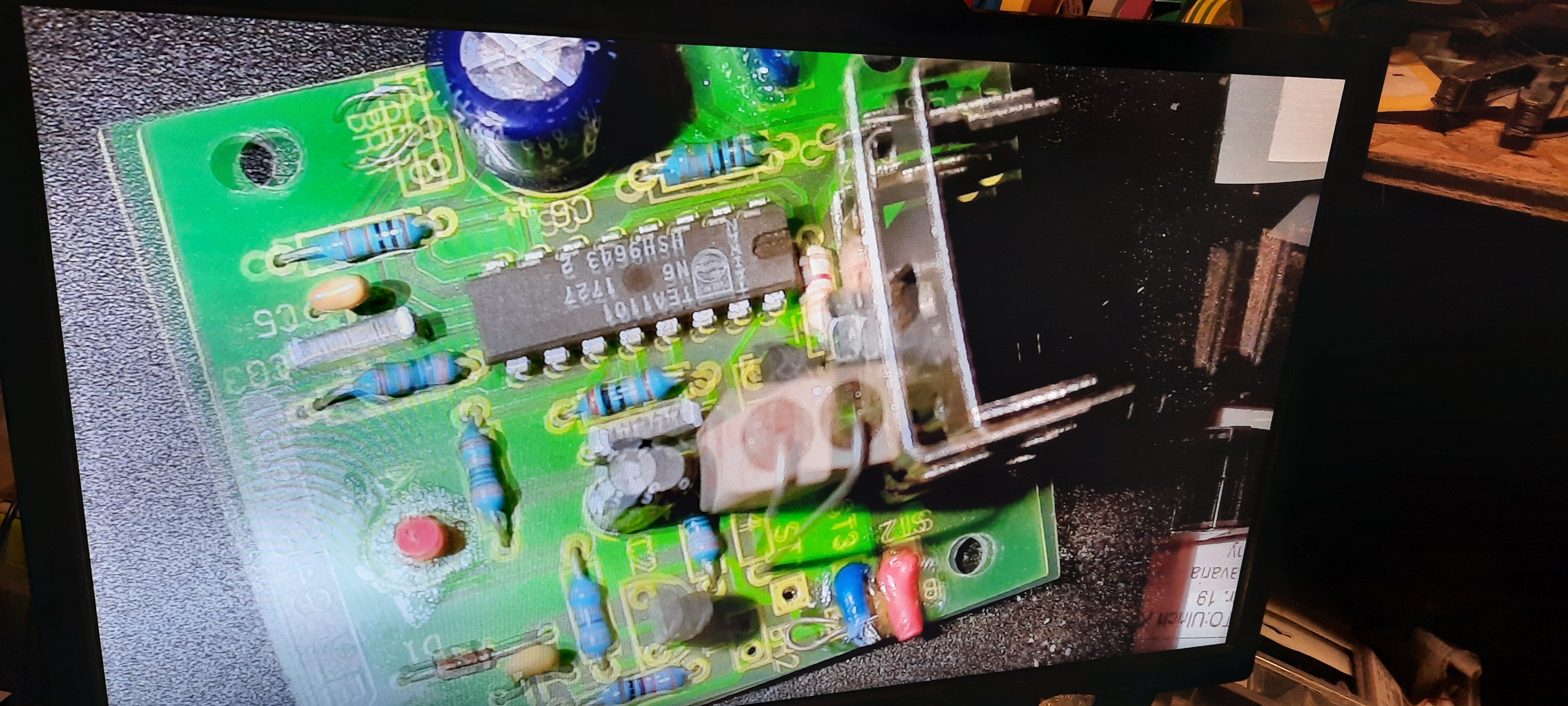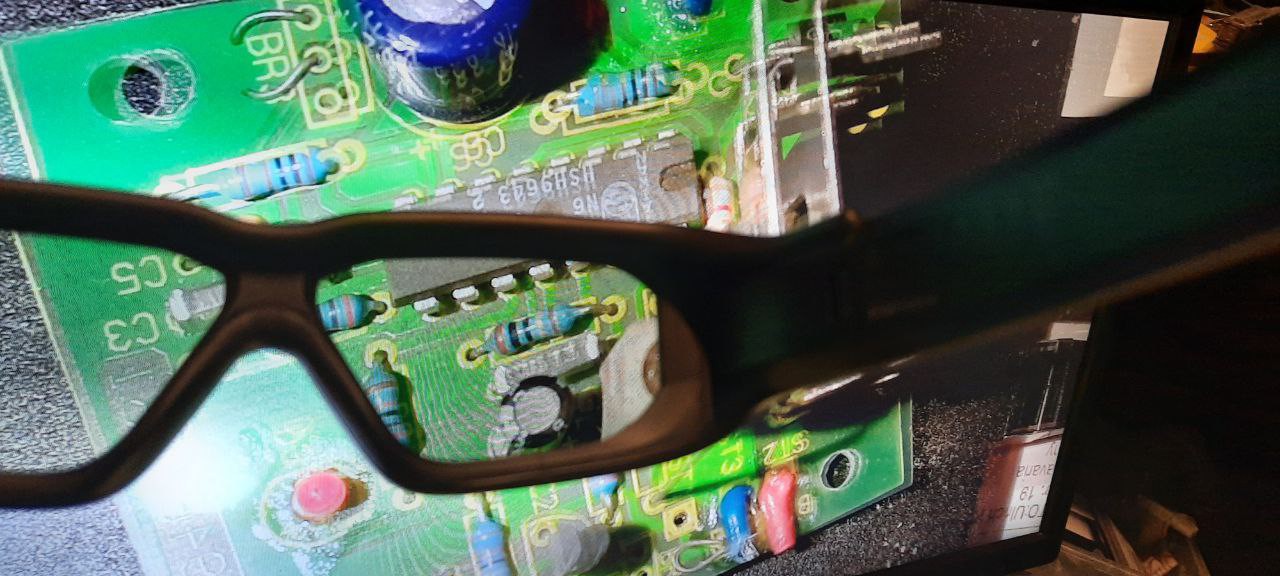-
Watch our video showcasing our affordable stereo microscope !
06/14/2021 at 03:23 • 0 comments -
First light with our new custom-built stereo camera stand
06/13/2021 at 01:22 • 0 commentsTeam Stereo Ninja just achieved first light with our new, custom stereo camera stand:
![]()
It's an awesome experience being able to adjust the cameras easily and being able to watch a proper stereo experience for the first time.
Note that, just like before, you won't be able to see the Stereo Effect, since the images posted here are just 2D images. Contact us if you want to join us in testing and refining Stereo Ninja - we are looking for early adopters.
-
Meet our Stereo Ninja mascot
06/12/2021 at 17:31 • 0 commentsOK, we do not really know why the project is called Stereo Ninja. Andreas came up with the idea and lacking a better name, we stuck with it. But then of course our logo/mascot has to match that theme, so let us present...
![]()
... the 3D googles wearing ninja panda, showing his favorites weapons, soldering iron and multimeter test leads.
Hope you like it ;-)
-
Stereo Ninja with CM4 board?
06/12/2021 at 11:06 • 0 commentsWhile the StereoPi2 (which takes a RaspberryPi 4 Compute Module) is not yet available, there are other CM4 boards with 2 MIPI CSI connectors which we could use for Stereo Ninja. One of them is the official CM4 Eval Board. I now have another one in my hands (thanks Tim for borrowing!), which looks perfect: the Waveshare CM4 IO Base Board. It has the needed 2 connectors, is very compact and only costs 20$.
![]()
While the Raspberry3 (and StereoPi) doesn't support FullHD in Side-By-Side Mode, the CM4 should be able to do that, as it even supports 4K output. So we definitely have to look into this!
-
How to achieve multi-user support in stereo microscopy
06/12/2021 at 00:48 • 0 commentsIn many companies working on electronics, standard stereo microscopes (either the standard binocular-style type or the "eyes free" Mantis-style type) has become the norm in order to increase the efficiency when working with small (typically 50 micrometers to 10 millimeters) objects like SMD components.
But what is often neglected is the ability to let multiple users view the stereoscopic image simultaneously. This is not only important for teaching reasons, but you can image how much a "pair programming" like approach for electronics could boost productivity.
Sure, there are solutions for letting someone take a peek into. Some higher-end stereo microscope (especially the classical "binocular" type) offer a third eyepiece, sometimes called a "pupil's eyepiece". Also, many microscopy setups use an additional microscope path with a camera, so you can use a standard monitor in order to display the image while the main user is looking directly through the optics.
But all of those solutions have two things in common: Not only are they expensive (a good camera setup for an existing microscope can cost many hundreds up to thousands of €) but everyone except the main user will only see a plain old 2D image .
Enter Stereo Ninja, the low-budget stereo microscope. Due to its unique concept of using a 3D monitor combined with dual cameras, it basically supports an arbitrary number of viewers.
Let's suppose you're using a shutter-based 3D monitor like the Asus VG248QE. "Shutter" means that everyone who wants to view the 3D image will have to wear shutter glasses. But that means that everyone who wears shutter glasses and is able to look at the monitor will be able to view the full 3D image - and everyone will be able to experience the same quality of stereoscopic image
In other words, with Stereo Ninja, you can easily have 5 to 10 concurrent users, and even more if you use additional hardware like active HDMI splitters to split the image to multiple monitors.
And there's one added gadget for you: Stereo Ninja supports 2D and 3D live streaming over the network thanks to StereoPi's awesome streaming support. But you'll have to wait a couple of days, since we'll cover this feature in a future project log :-)
-
A custom stereo camera stand
06/10/2021 at 15:27 • 1 commentEnjoy the new adjustable stereo camera stand Team Stereo Ninja has made in order to support stereo microscopy for the masses ! Best of all, it's so simple and cheap to build that everyone can build it within a couple of hours.
It's designed so you can adjust the camera position and angle while still being able to fix them in place.
Coming up: First light with the new adjustable camera stand.
![]()
![]()
![]()
-
Wearing glasses while using Stereo Ninja
06/09/2021 at 11:31 • 0 commentsJust realized that Stereo Ninja has another advantage over conventional stereo microscopes in case you are wearing glasses (like me).
When I do SMT soldering with the stereo microscope at the FabLab München, I take my glasses off. This way it's easier to get a good view through the eye pieces. But every now and then you want to look at your PCB (or the soldering station or some other tool) without microscope. For me (badly short-sighted) this means that I put on and off my glasses all the time. Not the ideal solution....
But with Stereo Ninja I do not have to do this! I'm wearing shutter goggles (over my regular glasses which works surprisingly well, at least with our model) so I get the 3D effect while looking at the monitor, but they still let me inspect my PCB directly perfectly fine! Much smoother workflow! :-D
-
Stereo Ninja - Stereo microscopy for the Masses
06/08/2021 at 02:12 • 0 commentsDid you ever have the chance of looking through one of those 3000€ Mantis microscopes? Let us share a secret with you: Once you did, if you do any type of electronics or even just love to look at them know you need a stereo microscope for yourself.
But the issue is.... even the cheaper varieties of those stereo microscopes are so expensive that they are simply out of reach for hobbyists and many professionals alike. Or is it?
Stereo Ninja is a new way of doing stereo microscopy. Instead of using specialized optics in an expensive toolkit, let's use two cameras and a 3D monitor - and a Raspberry Pi.
But how do you connect two cameras to a Raspberry Pi which only has one camera connector? There are multiple ways in order to do that, but one of the best is to just use the Raspberry Pi Compute Module (which has two separate CSI camera interfaces). Thankfully, the StereoPi project has already done all the electronics works and testing for us.
It's pretty simple. Just use two high-quality Raspberry Pi cameras with the StereoPi, display the images in a way compatible with standard 3D monitors and you have a stereo microscope.
![]()
Here is how it looks on the 3D monitor:
![]()
Obviously, you can't see the 3D effect in the photo but the "drunken look" with two similar images being displayed at once looks much more 3D when you've got your shutter glasses on:
![]()
Stereo Ninja
A DIY digital stereo-microscope. Low cost. Open source software and hardware. For electronics inspection, soldering work and more.
 FabLab München
FabLab München